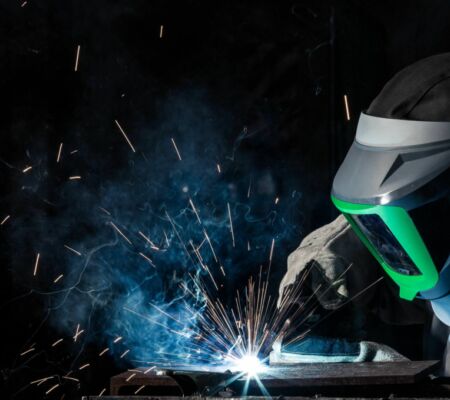
Welding can be an incredibly dangerous process, and the eyes are one of the most susceptible areas to exposure and damage. If the eyes aren’t properly protected, operators can suffer severe injury, so protection is crucial.
Back to Articles & Resources View all Welding & Fabrication content
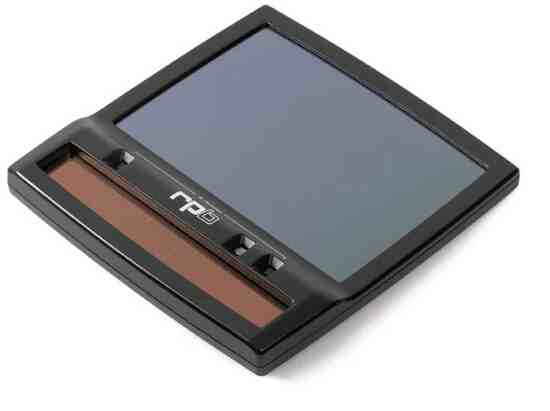
Auto Darkening Filter (ADF)
One of the greatest advancements in PPE for welding has been the invention of the auto-darkening filter (ADF). With an ADF lens, welders are not only able to see more clearly while welding, but most importantly and unlike traditional weld visors and to some extent even fixed shade lenses, they remove the need to lift the visor to check work between welds, minimizing the risk of eye injuries from sparks or debris, and reducing the risk of indirect exposure to harmful UV/IR radiation from nearby welders.
A lot of effort goes into developing new technologies, and although they may immeasurably improve the way in which we complete a task, we don’t always question how they work. In this article we break down each of the important elements that make up an ADF lens and examine how they function.
So, what are ADF lenses made of and how do they work?
There are three key components of an ADF lens, these being an Ultraviolet/Infrared (UV/IR) interference filter, polarization filters, and Liquid Crystal Cells (LCC). These are layered on top of each other and work together to protect the eyes.
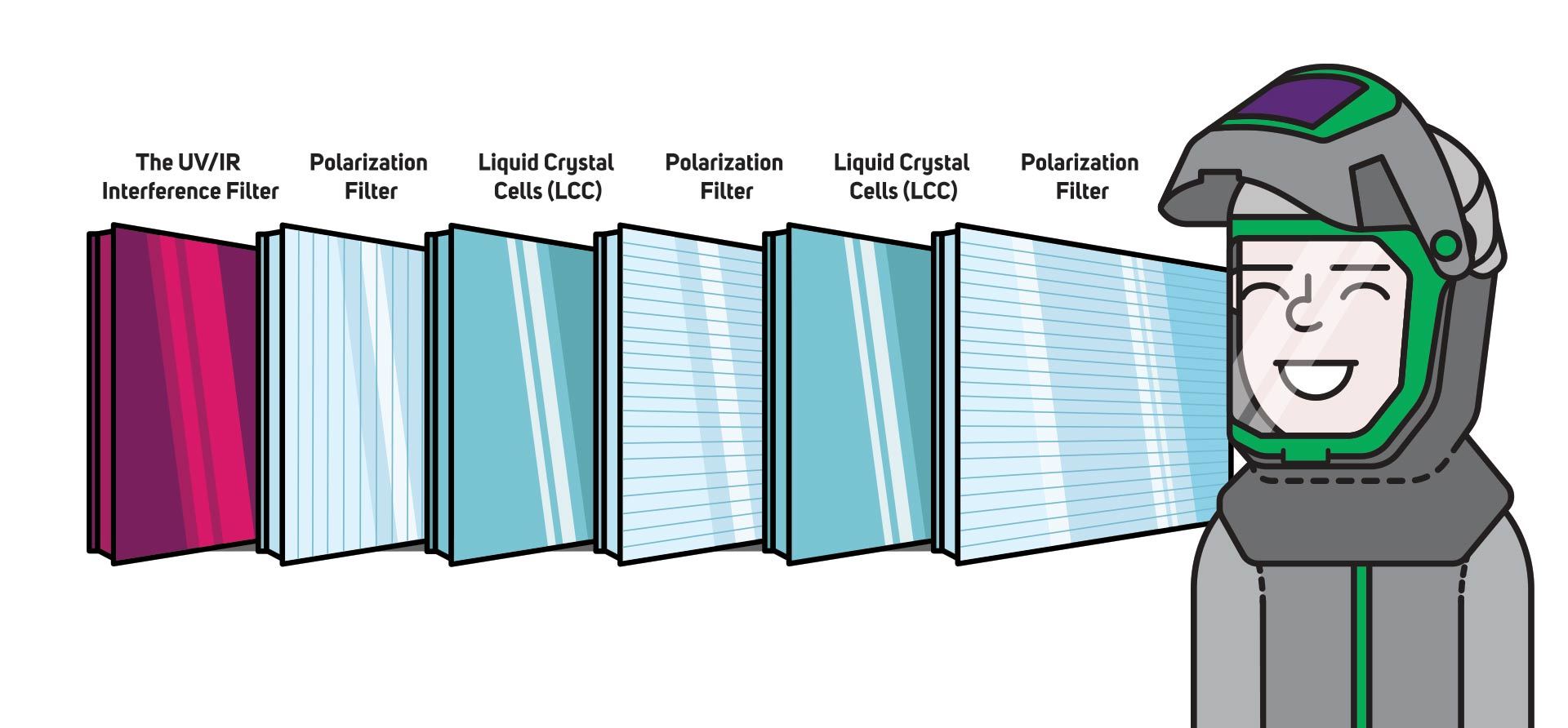
- The UV/IR Interference Filter
This layer is designed to protect the welder from Ultraviolet and Infrared rays generated during the welding process. The risk of UV exposure during welding is similar to that of sun exposure, and can result in short term damage such as reddening of the eyes, sensitivity to light, and even “sunburn”. Long term exposure can lead to serious health concerns such as cataracts, ocular melanoma, and skin cancer. The UV/IR interference filter is constructed from a thin glass layer which has several metallic layers – including five layers of silver and 6 of aluminum oxide. These layers work together to reflect and absorb 99.9% of IR radiation, and absorb 99.9997% of harmful UV radiation. The metallic layers are also used to protect the liquid crystal panel against heat damage.
- Polarization Filter
An ADF lens comprises of 3 layers of polarization filters. These are positioned between each of the other layers that make up the lens (refer to image). With all three combined, the polarization filters protect welders’ eyes from the bright light in the arc. The filter that is positioned after the UV/IR layer is placed at a 90-degree rotation compared to the other polarizing filters; this filters the darkest point.
- Liquid Crystal Cells (LCC)
The liquid crystal cells are positioned between the polarizing filter layers. These have the ability to bend light once stimulated by electricity, and can be controlled to adjust the shade state of the lens.
When the welding lens is switched off and not in use, the LCC bends the light 90 degrees, making the lens dark, similar to a shade 5 or 6. Once the lens is turned on and exposed to daylight, the polarized filters untwist, which causes the lens to drop to a shade 3, allowing the welder to comfortably see through the lens. Once the welding arc is struck it takes only 0.0001 of a second for the photosensors to trigger, and for the lens to adjust to the shade level that has been preselected, protecting the welder from the intense light created from the weld arc.
What does an ADF lens rating mean?
ADF lenses are assigned a lens rating, which is made up of four numbers, for example, 1.1.1.2. Each number refers to a different class, these being;
- Optical Class,
- Diffusion of Light Class,
- Variations in Luminous Transmittance Class,
- and Angle Dependence on Luminous Transmittance Class.
Each of these classes is assigned a score between 1-3 - the lower the number, the better the quality of lens.
Optical Class
Optical class refers to the distortion level when looking through the welding lens. A score of 3 would be very difficult to see through - like looking through rippled water, where as a 1 would be near perfect.
Diffusion of Light Class
When welding, any imperfections in a lens can have a huge impact on your view. This rating signifies the quality of lens in terms of manufacturing imperfections and clearness.
Variations in Luminous Transmittance Class
For a welding lens to be effective, there needs to be consistency in shading, meaning that the lens appears the same no matter which area you are looking through. Consistent, even shading would be assigned a 1, whereas a lens that has bright or dark areas, and general areas of inconsistency in shading would be assigned a 3.
Angle Dependence on Luminous Transmittance Class
Welding is not always completed directly in front of the operator, so it’s important when working across different angles, that the shade remains the same. This class rates the ability of the lens to provide consistency across differing angles.
ADF settings
ADF lenses can have a range of settings that can be adjusted in order to better suit the environment and type of welding that is being completed.
- Shade settings: Shade settings can range from 9-13, which will be determined by the type of welding process being undertaken, whether it’s MIG/MAG, TIG/WIG, and so on.
- Sensitivity settings: Enable you to set the level of brightness that will trigger the lens to darken.
- Delay settings: The delay changes how quickly the lens will go from a dark state to a light state.
Hopefully you now have a clearer understanding of how ADF lenses work. To learn more about welding respirators explore more articles on the discovery center, or to find the right respirator for you, check out our full range of fabrication respirators.
Work cited
Euro Marc (n.d.). THE DIFFERENCE BETWEEN 1/1/1/2 AND 1/1/1/1 AUTO-DARKENING LENS... Retrieved from Euro Marc: https://www.euromarc.co.nz/res...
Young, P. (2022, February 1). How Do Auto-Darkening Helmets Work? Retrieved from Welding Headquarters : https://weldingheadquarters.co...
Related Articles
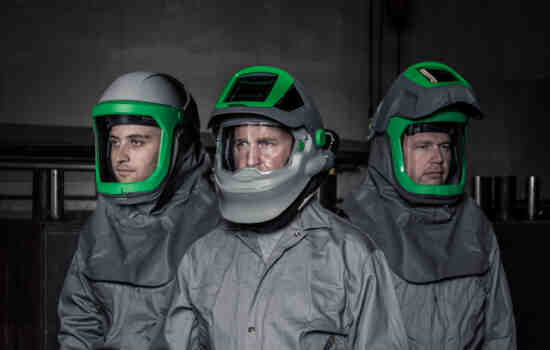
Which welding/ fabrication respirator should I buy?
Need a new welding/fabrication respirator? We break down the key differences between the Z-Link and Z4 to make this decision easier!
Read article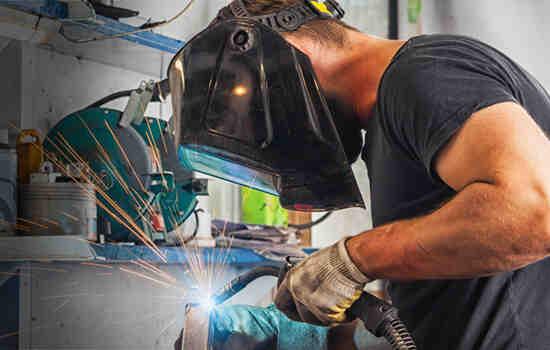
Danger of UV Rays in Welding
We take a look into the health effects of UV exposure from welding and what should be done to protect yourself at work.
Read article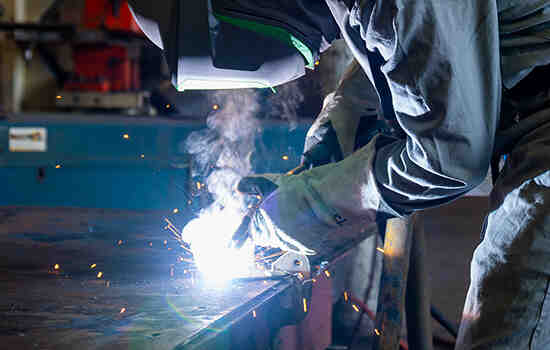
Parkinsonism and Welding
Welding fume exposure that contains manganese is known to cause the onset of Parkinsonism – a life-debilitating health condition.
Read article